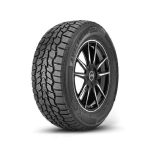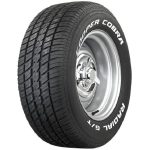Deflating car tires might seem straightforward, but understanding the correct method is essential for safety and effectiveness. Whether you’re preparing your vehicle for storage, changing tires, or managing a flat, knowing how to deflate car tires properly can make a significant difference. This guide will walk you through each step of the process, ensuring you get it right every time.
Understanding the Need to Deflate Car Tires
Why Deflate Car Tires?
There are several reasons why you might need to deflate your car tires. Some common scenarios include:
- Tire Replacement: Deflating tires is often necessary when changing or repairing them.
- Storage: If you’re storing your vehicle for an extended period, slightly deflating the tires can help prevent flat spots.
- Vehicle Transport: When transporting a vehicle, especially if it’s on a trailer, deflating the tires can help manage weight and improve stability.
Risks of Incorrect Deflation
Improper deflation can lead to several issues:
- Damage to Tires: Rapid or uneven deflation can damage the tire’s internal structure.
- Safety Hazards: Deflating tires improperly can lead to dangerous situations, especially if the tires are not handled correctly afterward.
Tools You’ll Need
Essential Tools for Deflating Tires
To deflate your car tires effectively, you’ll need a few basic tools:
- Tire Pressure Gauge: Helps you monitor the current pressure and ensure accurate deflation.
- Valve Core Remover Tool: Useful for removing the valve core to speed up the deflation process.
- Air Compressor or Pump: While primarily used for inflating, it can also assist in controlled deflation.
Optional Tools
- Tire Inflator with Deflator Function: Some modern inflators come with a deflation feature, making the process easier.
- Gloves: For handling tires and tools more comfortably.

Step-by-Step Guide on How to Deflate Car Tires
Step 1: Prepare Your Vehicle
Before starting, ensure your vehicle is parked on a level surface and the parking brake is engaged. This prevents the car from rolling and ensures safety while working.
Step 2: Check Tire Pressure
Use a tire pressure gauge to check the current pressure of the tires. This helps you understand how much air needs to be removed. Most car tires are inflated to around 30-35 PSI (pounds per square inch), but always check your vehicle’s manual for the exact specifications.
Step 3: Locate the Valve Stem
The valve stem is a small protruding component on each tire where air is inflated or deflated. It is typically covered by a small cap. Remove this cap carefully and set it aside in a safe place.
Step 4: Deflate the Tire
Using a Valve Core Remover
- Attach the Valve Core Remover: Fit the valve core remover onto the valve stem. Turn it counterclockwise to unscrew the valve core.
- Allow Air to Escape: Once the valve core is removed, air will start to escape from the tire. You can speed up this process by pressing the valve core with the remover tool.
- Monitor the Pressure: Regularly check the tire pressure with your gauge to ensure it reaches the desired level.
Without a Valve Core Remover
- Press the Valve Stem: If you don’t have a valve core remover, you can press the metal pin inside the valve stem with a small tool like a screwdriver or the tip of a pen. Be cautious to control the airflow to avoid rapid deflation.
- Check Pressure Frequently: As you deflate the tire, keep checking the pressure to avoid over-deflating.
Step 5: Recheck and Adjust
Once you’ve reached the desired pressure, recheck with your gauge. If the tire is deflated to the point where it needs to be re-inflated, you can use an air compressor or pump to adjust it.
Step 6: Replace the Valve Core and Cap
After deflation, replace the valve core using the valve core remover tool by turning it clockwise until secure. Then, screw the valve cap back onto the valve stem to protect it from dirt and moisture.
Additional Tips for Safe Tire Deflation
Avoid Over-Deflation
Deflating tires too much can lead to problems with tire performance and safety. Always aim for a slight deflation and avoid fully flattening the tire unless absolutely necessary.

Keep Tires Balanced
If you’re deflating tires for storage or transport, make sure they are kept balanced and in a suitable environment to avoid flat spots or deformation.
Regularly Check Tire Condition
If you frequently deflate and inflate your tires, regularly inspect them for signs of wear and tear. Proper maintenance ensures your tires remain in good condition.
Troubleshooting Common Issues
Tire Does Not Deflate
If you find that the tire is not deflating, ensure the valve core is correctly removed or pressed. You might also check for any obstructions or damage to the valve stem.
Air Escapes Too Quickly
If air escapes too rapidly, it could be due to a damaged valve core or stem. In such cases, consider replacing the valve core or seeking professional assistance.
Advanced Techniques and Considerations
Using a Tire Deflator Tool
For those who frequently work with tires, a dedicated tire deflator tool can be highly beneficial. These tools are designed to deflate tires quickly and uniformly, making the process more efficient.
- Choose the Right Tool: Select a tire deflator tool that matches your tire valve type (e.g., Schrader or Presta).
- Attach the Tool: Fit the tool onto the valve stem and adjust the settings to control the deflation rate.
- Deflate Uniformly: Monitor the tire pressure as the tool removes air to ensure even deflation.
DIY Deflation with Common Tools
If you don’t have specialized equipment, you can use common household items for deflation:
- Using a Screwdriver: Carefully use a flathead screwdriver to press the valve pin. Be gentle to avoid damaging the valve.
- Using a Pen: The tip of a pen can also serve to press the valve pin. Ensure you control the airflow to prevent rapid deflation.
Maintenance After Deflation
Inspecting Tires
Once the tires are deflated, inspect them for any signs of damage or wear. Look for:
- Cracks or Cuts: Check the sidewalls and tread for visible damage.
- Uneven Wear: Examine the tread pattern for signs of uneven wear, which may indicate alignment issues.
Storing Deflated Tires
If you’re storing deflated tires, follow these guidelines:
- Keep Them in a Cool, Dry Place: Store tires away from direct sunlight and moisture.
- Use Tire Covers: Consider using tire covers to protect them from dust and environmental factors.
- Store Flat: Lay the tires flat or stack them to prevent deformation.
Deflating Tires for Specific Scenarios
Preparing for Off-Road Driving
If you’re planning to drive off-road, slightly deflating your tires can improve traction and ride comfort.

- Deflate to 20-25 PSI: Reduce tire pressure to around 20-25 PSI, depending on your vehicle and terrain.
- Reinflate After Use: After off-roading, ensure you reinflate your tires to the recommended pressure for regular driving.
Managing Tire Pressure for Vehicle Transport
When transporting a vehicle, deflating the tires can help with stability and weight distribution.
- Slight Deflation: Deflate to a lower pressure but avoid complete flatness.
- Check Transport Guidelines: Follow any specific instructions provided by the transport company.
Conclusion
Deflating car tires is a simple yet crucial task for various automotive needs. By following these steps and tips, you can ensure that your tires are deflated correctly and safely. Whether for storage, repair, or transport, proper tire maintenance is essential for vehicle performance and safety.


